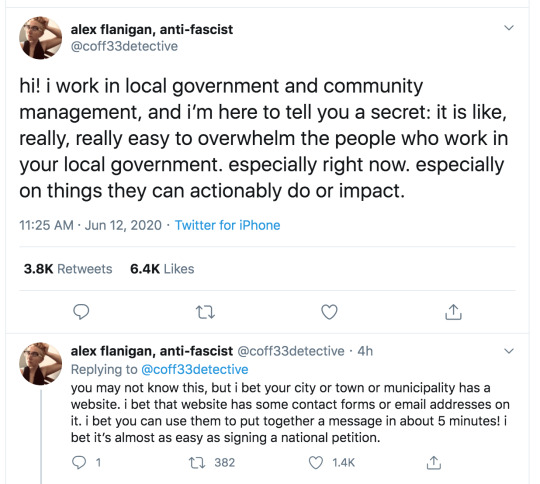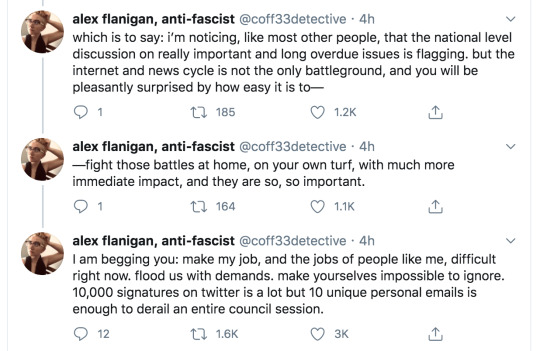Text
would you put a discarded fruit sticker on my forehead in whimsical jest yes or no
219K notes
·
View notes
Text
If you like frogs. Or possums. Or cool builds. Or happiness. This is the video for you.
206K notes
·
View notes
Text
the problem with autism is sometimes you want to do something (brave) but you need someone to gently walk you through each step so you know what will happen. and people don’t like doing that
222K notes
·
View notes
Text
See, the thing about boundaries is that if you don't have some kind of sign or landmark along the way, you'd never know that the boundary has been crossed.
Like it's easy to tell where the boundary between Indiana and Ohio is along i70 because there's the big blue arch, the giant cross, a fireworks stand, and an underwhelming sign that says 'welcome to indiana.'
But if you're coming at it from one of the country roads, you may not have any of those things. You might think you're still in Ohio until you drive through a town and you're like 'crap, this is Indiana, ain't it.'
407 notes
·
View notes
Text
"You can say that [orangutans] are not dependent on social support and approval, and if you admire this in them, that an orang is irredeemably his own person, 'the most poetic of the apes', researcher Lynn Miles told me once in an unguarded moments. What she had in mind was the difference between orangs and chimps in the way they carry on their discourse with the world.
Chimps are much admired for their tool use and for their problem-solving relationship with things as they find them...the orang is, let us say, not so replete with enterprise. Give an orangutan the hexagonal peg and the several shapes of hole, and then hide behind the two-way mirror and watch how he engages with the problem.
And watch and watch and watch--because he does not engage with the problem. He uses the peg to scratch his back, has a look-see at his right wrist, makes a half-hearted and soon abandoned attempt to use his fur as a macramé project, stares dreamily out the window if there is one and at nothing in particular if not, and the sun begins to set. (The sun will also set if you are observing a chimp, but the chimp is more amusing, so you are less likely to mark the moment in your notes. An orang observer has plenty of time to be a student of the vanities of sunset.)
You watch, and the orang dreams...when casually and as if thinking of something else, the orang slips the hexagonal peg into the hexagonal hole. And continues staring off dreamily."
Vicki Hearne, "The Case of the Disobedient Orangutans"
29K notes
·
View notes
Text
when you feel your clothes fresh out of the oven

683K notes
·
View notes
Photo


https://twitter.com/coff33detective/status/1271463582312673281
“make yourselves impossible to ignore. 10,000 signatures on twitter is a lot but 10 unique personal emails is enough to derail an entire council session.”
99K notes
·
View notes
Text
Reblog daily for health and prosperity

280K notes
·
View notes
Photo
Me neither sweetie, me neither

378K notes
·
View notes
Text

I didn't know what the right term was in english so now i just look like some kind of knitting addict who just wants it to end.
7K notes
·
View notes
Text

My cartoon for this week’s Guardian Books.
4K notes
·
View notes
Text

Well, you know, some bathroom graffiti offers insight.
236K notes
·
View notes
Text
the fact that walls get dusty is ridiculous. you're vertical. act like it.
228K notes
·
View notes
Text
this is a terrible time to be alive *remembers the latter half of the 14th century* this is a not so good time to be alive
76K notes
·
View notes


